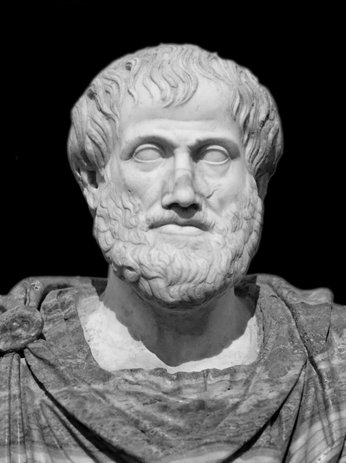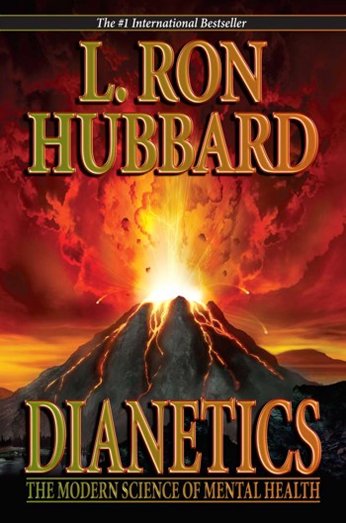
-
HOME
-
WHAT IS STANDOur Mission Our Values Our Help Contact
-
WHAT WE FIGHT FORReligious Freedom Religious Literacy Equality & Human Rights Inclusion & Respect Free Speech Responsible Journalism Corporate Accountability
-
RESOURCESExpert Studies Landmark Decisions White Papers FAQs David Miscavige Religious Freedom Resource Center Freedom of Religion & Human Rights Topic Index Priest-Penitent Privilege Islamophobia
-
HATE MONITORBiased Media Propagandists Hatemongers False Experts Hate Monitor Blog
-
NEWSROOMNews Media Watch Videos Blog
-
TAKE ACTIONCombat Hate & Discrimination Champion Freedom of Religion Demand Accountability
Look, Don’t Listen
Everyone knows the heart pumps blood in the human body, circulating it throughout the system over and over. Right?

In the 2nd century, however, Galen—a noted philosopher, physician, and surgeon in the Roman Empire, believed the liver was the source point of blood, created by eating food. Galen became a significantly prominent authority of all things medical for several centuries. Never mind the fact that he never, for religious reasons, dissected a human body for study. Still, his ideas dominated the medical field for the next 1,500 years!

Then along came Andreas Vesalius, a physician in the 1500s. Because of more advanced medical techniques, such as actually dissecting a human body in order to study them, he discovered that some of Galen’s theories were not true. For example, Galen said the human liver had five lobes, and Vesalius showed it had two. Galen thought the heart had holes in it, and Vesalius proved it did not. But refuting long-held beliefs just wasn’t done, even with evidence to hand. Vesalius was met mostly with anger and opposition by the status quo, even though a few started to question Galen’s validity.

Finally came William Harvey, another physician from England in the 1600s who advanced medicine even further. It was Harvey who is credited with discovering how circulation occurs in the body and that blood courses through the heart, not the liver. While his discovery was groundbreaking and marked the beginning of the end of treating disease by bloodletting and other less workable—and often more harmful—“technologies,” it didn’t change minds right away. In fact, Harvey was ridiculed and driven into seclusion for his radical ideas. His discoveries still didn’t make much of a dent in the Galen-dominated world of medicine. It has been reported that he said, “Much better is it oftentimes to grow wise at home and in private than by publishing what you have amassed with infinite labor, to stir up tempests that may rob you of peace and quiet for the rest of your days.”
Luckily, brighter people who looked at the evidence, rather than blindly following the long-established, false beliefs generated by Galen 1500 years earlier, were able to bring medicine forward by leaps and bounds using the discoveries of Vesalius and Harvey. This dramatically changed the treatment of disease and illness in ways unrecognizable to earlier ancient methodologies.

Let’s not forget Aristotle, who, in around 330 B.C., put forth the idea that the earth was the center of the universe and that the sun revolved around it. Move forward to the 1600s, where this “authoritative belief” still held and was further cemented by the Catholic church. Anyone saying otherwise faced burning at the stake or being otherwise ostracized. Galileo himself was imprisoned in his own home for daring to promote the theory of Copernicus that the earth revolved around the sun, putting it in its more proper position in the heavens and NOT at the center of the universe. Interestingly, it was Galileo’s use of the 20-power telescope that provided the evidence of the earth revolving around the sun. But as stated above, he was arrested and sentenced to house arrest for such blasphemy. Once again, authoritarianism won out over discoverable, observable science.

While it took 1,500 years for a revolution to begin in the medical field, L. Ron Hubbard started a revolution concerning the mind in 1950 with the release of Dianetics: The Modern Science of Mental Health. In it, Mr. Hubbard put forth quite distinctly his discoveries about the mind and human behavior. He showed clearly that there was a hidden source of aberration that had eluded man since the beginning of his presence on Earth. Strict empirical evidence followed by exhaustive testing, he not only showed he had discovered the source of Man’s irrational behaviors, he developed the technology that, when applied exactly, brought about the eradication of insanity and psychosomatic disorders. The results? Individuals with higher IQs, faster reaction times, clearer and faster thinking, and eradication of psychosomatic illnesses, to name but a few. Now, wouldn’t you think this to be, at least, an important discovery?
Man had (and still does have) quite a colorful arsenal of weapons to “treat” the mental health of humans. They include, but are not limited to, such practices as bloodletting, chanting, narcosynthesis, lobotomy, electric convulsive therapy (ECT), poison ingestion, drugs and many, many others. Today, practices of the western world are hugely devoted to these powerful drugs, but ECT still exists as well as the practice of cutting up parts of the brain. The result of these barbaric practices are destroyed and incapacitated subjects, if they don’t die.

Now, 68 years later, Dianetics and Scientology are still spearheading their way through society’s much beloved, although fantastically incorrect, ideas about man and the spirit. Psychiatry and psychology promote ruthlessly and endlessly that man is just flesh, bone, blood, and brain walking around. Any inconsistency in behavior or physical malady is met instantly with a “solution” best used on, well… not even animals. Drugs are everywhere, legal and otherwise. How about jolts of electricity through the brain to cure your depression?
L. Ron Hubbard is without doubt in that league of courageous, compassionate and intelligent human beings throughout history who actually looked, searched, investigated, applied scientific and measurable technologies, and found truths.
Scientology is about truth. And truth, by its very nature, cannot be dressed up or down. It is what it is. Mr. Hubbard simply laid it out for anyone to look at. More and more people every day avail themselves of this information, use the information, and seeing that it works, discard old, “established,” unworkable methods and practices that harm and lead only to darkness.
Scientology is intended for the common man—the man on the street, because Scientology deals with life itself. Anyone alive can see for him or herself whether it works. It does not need to be interpreted or translated by any “higher authority.”









